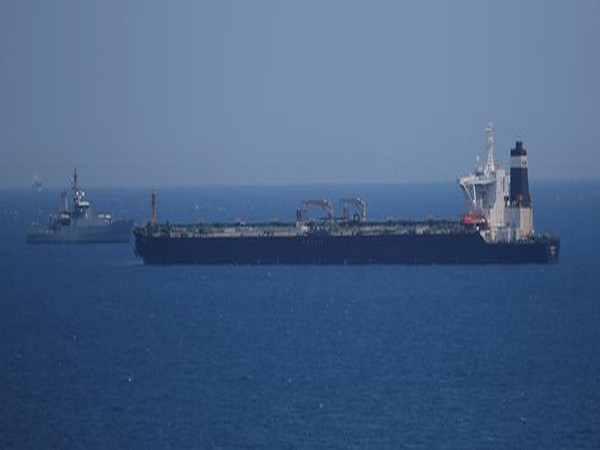ANALYSIS-Rocketing tanker freight rates send Mexico's fuel costs soaring
On routes to Mexico, the extra costs have added price volatility to an otherwise stable freight market, according to Refinitiv Eikon data and people familiar with the matter. The rates are the latest blow to state oil company Petroleos Mexicanos, which controls the bulk of fuel imports later sold at subsidized retail prices.

High rates worldwide for moving oil are driving up Mexico's fuel costs as importers face tanker fees on North America's busiest maritime route that are more than double levels seen in recent years, traders and shippers said.
A reshuffling of global oil flows in the aftermath of Russia's invasion of Ukraine and high marine fuel prices have boosted transportation costs for most fuel shipments. On routes to Mexico, the extra costs have added price volatility to an otherwise stable freight market, according to Refinitiv Eikon data and people familiar with the matter.
The rates are the latest blow to state oil company Petroleos Mexicanos, which controls the bulk of fuel imports later sold at subsidized retail prices. They are also hitting private importers bringing cargoes from the United States and elsewhere, many of whom complain of a tilted playing field. Mexico is Latin America's largest fuel importer and the world's fourth-biggest buyer of gasoline. Over a half-dozen, loaded fuel tankers crisscross the Gulf of Mexico each day.
Rates for tankers moving U.S. refined products to Mexico's Pajaritos - the main entry port for imported fuel - reached $39.16 per tonne on Aug 1. Between 2017 and the first quarter of 2022, that fee never exceeded $18 a tonne. Other busy fuel transportation routes including Middle East-Europe and Singapore-China are also seeing high volatility since March, the Eikon data showed. But those rates have not surpassed the peaks of 2020, when high demand for floating storage left the market with few available tankers.
Mexico's importers have limited options to cut their bills. "We are paying $50,000 per day for tankers coming from the U.S. Gulf Coast," a Mexico-based shipper said. "Mexico's ports do not accommodate larger tankers, which would cut costs, storage is limited, and we compete with Pemex's lump-sum contracts," the person said.
Under a lump-sum contract, a tanker is chartered for a one-way voyage independent of cargo size. Demurrage fees for late delivery are not paid if a trip takes longer, but loading and discharging expenses are levied on the charterer. Pemex did not reply to a request for comment.
OLD AND NEW ISSUES U.S. fuel exports to Mexico rose slightly in the first five months of this year to 1.2 million barrels per day (bpd) from 1.12 million bpd in the same period of 2021, reflecting post-COVID demand recovery and insufficient domestic output.
The country has struggled to make room for this 7% fuel import increase as Pemex deals with a limited tanker fleet and insufficient pipeline and storage capacity, leading to port bottlenecks. The congestion also contributes to higher freight tariffs when chartering contracts are renewed. President Andres Manuel Lopez Obrador's administration hopes that building a new refinery will reduce the country's imports and make it more fuel self-sufficient, but Mexico's purchases have not receded.
As of Aug. 3, more than 40 tankers were waiting to discharge in Mexico, almost half of them over a week, according to Eikon data. The waiting times are longer at Pacific coast ports, where infrastructure limitations are greater. Tankers carrying gasoline from China, Singapore, and the United Arab Emirates have added to the backup. The vessel bottleneck is smaller than in 2020 when imports planned by Pemex trading unit PMI clashed with plummeting fuel demand amid COVID-related lockdown measures. But the congestion is slowly rising, the data showed.
On top of that, Lopez Obrador has prioritized Pemex imports over permits to private distributors, a practice denounced by some energy firms, leaving the bulk of purchases to PMI. After paying the high freight rates, Pemex sells the imported fuel at subsidized retail prices that have contributed to heavy losses in past years. This year, though, the company is on track to turn a full-year profit.
Unable to make a profit from imports, many distributors in Mexico end up buying most of their fuel from Pemex. "This price volatility is coming from the war. Routes that were previously completed in 10 days, are now taking months. If there are fewer tankers available, like in Mexico, it is even more expensive," a Pemex trader said.
(This story has not been edited by Devdiscourse staff and is auto-generated from a syndicated feed.)
ALSO READ
500 foreign maids in Singapore duped in 2023, says govt
Russian drone attack kills five in Ukraine's Kharkiv, officials say
Singapore plans to build a pool of 100 nuclear experts
Russian drone attack kills at least four in Ukraine's Kharkiv, officials say
NATO marks its 75th birthday as war in Ukraine and rising populism gnaw at its unity










